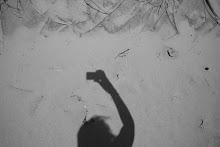La Science des rêves
Trailer of 'The Science of Sleep'
I don't really like the trailer to 'The Science of Sleep' because, like most trailers, I find it misleading on what the film is about. But it's better than nothing. I saw the film last night and LOVED it. It is the most honest movie I've seen since Garden State. It is about about Stephane, played by the seductive Gael García Bernal, who lives in a surreal world and mixes up dreams with reality and reality with dreams. His father passes away so he moves from Mexico to Paris to be with his French mother. She puts him up in a mundane job at a calendar company and he falls in love with his neighbor's friend, and then ultimately his neighbor who has the same childlike creative take on the world that he does, only she always knows where dreams end and reality begins. The movie is in Spanish, French and English, so all you multilinguals out there are going to have lots of fun with this.
Where is the honesty in it all? It's the notion of being a creative person stuck in a job where you are no more than a cog in a machine. It's falling in love with one person only to realize that it is the other person who is an extension of who you are. It is dealing with a parent who tries to make you someone your not and simply doesn't understand you. And it's about the frustration of dealing with someone you care about, but cannot communicate with since they seem to live on another planet half the time.
The sets were divine. They used lots of materials, yarn, buttons toilet rolls etc. that were all very tangible and childlike.
Here are some excerpts from an interview with the writer and director, Michel Gondry (no I did not interview him, it's from the official website):
I think many artists spend a lot of time developing their skills to compensate for their inability to reach out. You want to make an object that is an intermediary between you and someone else, instead of directly talking to them. You want people to take notice of you, and ultimately, you want to find a girlfriend.
Basically, when these artists are out in the world trying to find a mate, also out there are the people who didn’t waste their time being artists. So they are out on the market, getting all the girls before you. It’s what happened to Stephane.
Stephane has your creative gifts, but he hasn’t been able to make them work for him in the real world, as you have.
He makes these great things for Stephanie. But he’s so into his own world that when he tries to be with her it doesn’t work. She has a down-to-earth quality that makes his neurosis a little scary for her. You can see their difference when he says that the glasses allow you to see real life in 3D, and she says, “Life is in 3D already.” She’s more aware of what’s out there, and he’s more inside, more oblivious."
You tend to work with effects in two ways. Sometimes it’s technologically astounding: it makes you wonder how it was done; and sometimes it looks like an idea a clever child might have come up with.
I’m aware of both sides. I’m aware that sometimes people can be really amazed by the precision of the technology, but on the other hand, I like it to be naïve, handmade and crafted. It’s a combination. But it’s hard to maintain that in a film. There are so many people involved and everybody tends to polish everything.
There are a lot of things we see in animation where it’s so perfect you can’t see the difference compared to CGI. It’s so detailed and perfect. When people try to be too good it’s detrimental to the spontaneity.
I’m a very good animator, and when you look at some of the backgrounds in “The Science of Sleep,” they’re really detailed--but there’s an intentional clumsiness to the way they’re conceived. I wanted to be sure we preserved this handmade quality in the movie.
You made all the animation ahead of time. How long did the process take?
Five years ago, I bought my Aunt’s house in the mountains. At one time there was a saw-mill there. All the equipment was gone; it was just a bare warehouse. It’s pretty small, but we transformed it into a mini-factory for animation.
We shot all the animation for “The Science of Sleep” with a crew of about ten people over the course of two months. We got a lot out of those two months – it cost nearly the equivalent of adding a week to the budget if we had the full cast and crew working, which is still quite a lot of money – but the effort was worth it. We created the dream world before we began shooting the film, before the story was fully completed. During the shooting, I had to work around the dreams, rather than the other way around. It made the film more interesting, because it wasn’t done in the typical way where the dreams follow the arc of the story.
Links:
http://wip.warnerbros.com/scienceofsleep/ (official website)
http://www.myspace.com/scienceofsleep (good for screensavers, wallpapers, buddy icons)
Labels: Film

0 Comments:
Post a Comment
<< Home